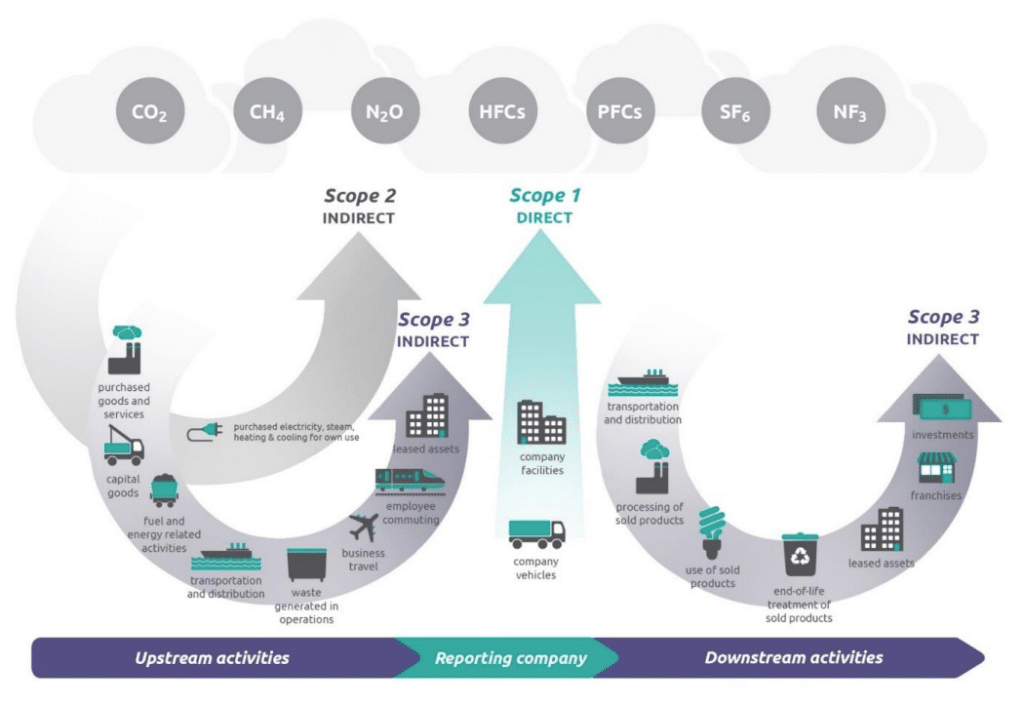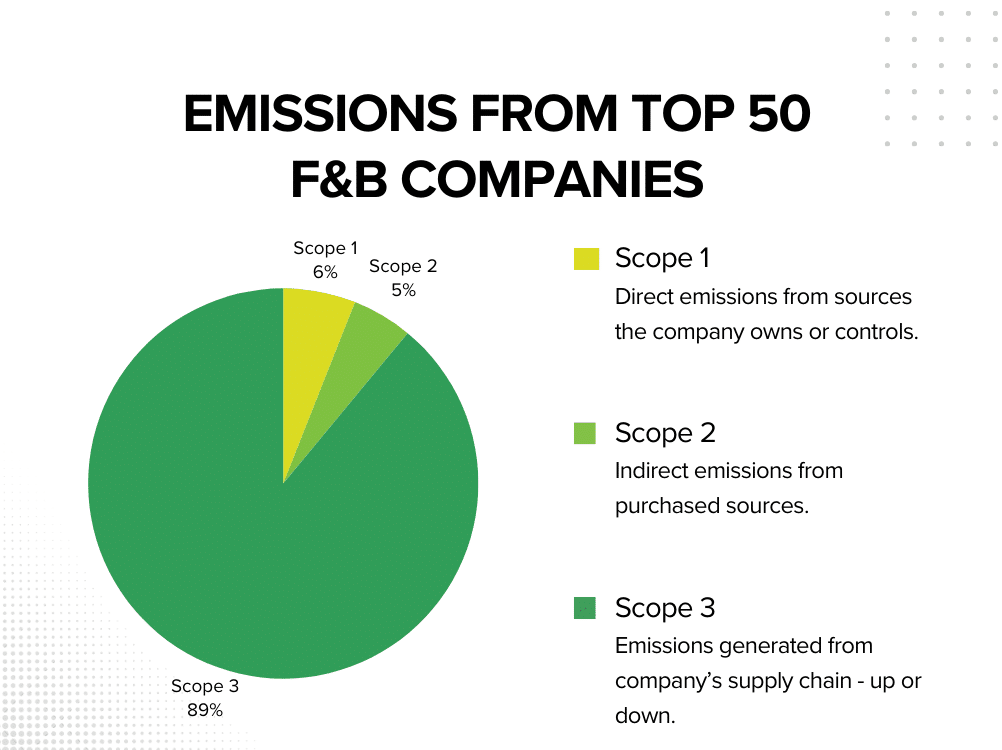The global food system is getting a green makeover. Domestically, grocery retail giants like Target and Kroger have set goals to reduce their greenhouse gas emissions, and they’re not stopping at their own doors. With roughly 90% of the carbon footprint coming from their supply chain in the form of scope 3 emissions, retailers are looking to suppliers to step up and share how they are prioritizing sustainability within their own operations.
The Pressure of Net Zero is Hitting Food Suppliers
Suppliers will need to adapt to new sustainability expectations if they want to remain competitive, strengthen relationships with retailers, and stay on store shelves.
So where should suppliers start, what is really required, and will it really make a difference? Pinion’s sustainability team has broken down the most important pieces impacting food and beverage suppliers today.
4 Crucial Elements for Suppliers to Understand
- The difference between scope 1, 2 and 3 emissions
- Why grocery retailers are zoned in on scope 3 supply chain emissions
- Important reporting standards to be aware of
- What this means for F&B suppliers
What are Scope 1, 2, and 3 Emissions?

Source: Greenhouse Gas Protocol
The Greenhouse Gas Protocol divides greenhouse gas impacts into three scopes:
Scope 1 emissions – Direct emissions from sources the company owns or controls. Ex: company facilities, owned vehicles and other on-site energy production or processes that directly emit GHGs.
Scope 2 emissions – Indirect emissions from purchased sources. Ex: purchased electricity and cooling.
Scope 3 emissions – Any other emissions generated from the company’s supply chain, both upstream and downstream. This includes a bucket called “Purchased Goods and Services” which includes all the products that fill a retailer’s shelves.
Many retailers have addressed or are working on the low-hanging fruit, scope 1 and 2 emissions, and are now turning their focus to scope 3 emissions and suppliers.
Why Do Grocery Retailers Care About Scope 3 Emissions?
Of the three categories, scope 3 emissions account for a vast majority of total emissions for retailers and food and beverage companies. In fact, the top 50 U.S. food and beverage companies reported that scope 3 emissions account for 89% of their total emissions – making Scope 3 emissions one of the most challenging, but impactful, areas to focus (Figure 2).

What This Means for Food and Beverage Suppliers
The sustainability commitment is already impacting suppliers. Most major retailers now require suppliers to complete sustainability reports and assessments to showcase their carbon-reduction efforts. Some of the most commonly required assessments are detailed below.
Common reports/ assessment required by retailers:
- THESIS by the Sustainability Consortium – THESIS is a performance assessment system that guides retailers and suppliers to benchmark, quantify, and act on critical sustainability issues within their consumer product supply chains.
Retailers using THESIS: Target, Sam’s Club, Walmart, Amazon, Ahold Delhaize, Tractor Supply Co. View the list here.
- EcoVadis – EcoVadis is a sustainability ratings and intelligence solution that helps companies manage ESG risk and compliance, meet corporate sustainability goals and track and report their improvements.
Suppliers using EcoVadis: Nestle, Coca-Cola. View the full list here.
- SASB (Sustainability Accounting Standards Board) – SASB is a standards-setting organization that develops industry-specific standards for disclosing sustainability risks and opportunities.
Retailers using SASB: Walmart, Hilton Food Group, Kroger, Sysco, Sprouts Farmers Market, Inc. US Foods Holding Corp. View the full list here.
Retailers use these assessments to evaluate supplier sustainability and collect some level of measurement consistency, because the first step in reducing Scope 3 emissions is measuring them.
These assessments provide suppliers the opportunity to benchmark, measure progress and address key concerns within their operation. But they are rigorous and time-consuming, especially if you don’t have an in-house sustainability expert. And in some cases, sustainability efforts are being factored into shelf placement and discontinuation decisions.
Next Steps
It’s essential to prioritize Scope 1 and 2 emissions as a first step. Once those areas are addressed, conduct a Scope 3 screening to determine the biggest contributors to your Scope 3. Focus on continuous improvement rather than a one-time-check-the-box mentality. Doing so will keep your business competitive, strengthen customer relationships, and provide valuable information to address sustainability opportunities for your operation.
Pinion sustainability experts assess and create right-size strategies to help food suppliers take a leading role in their category’s sustainability efforts. Connect with a Pinion sustainability advisor to learn more.











